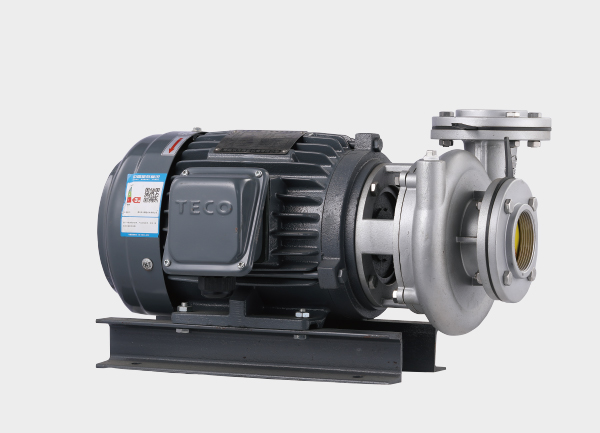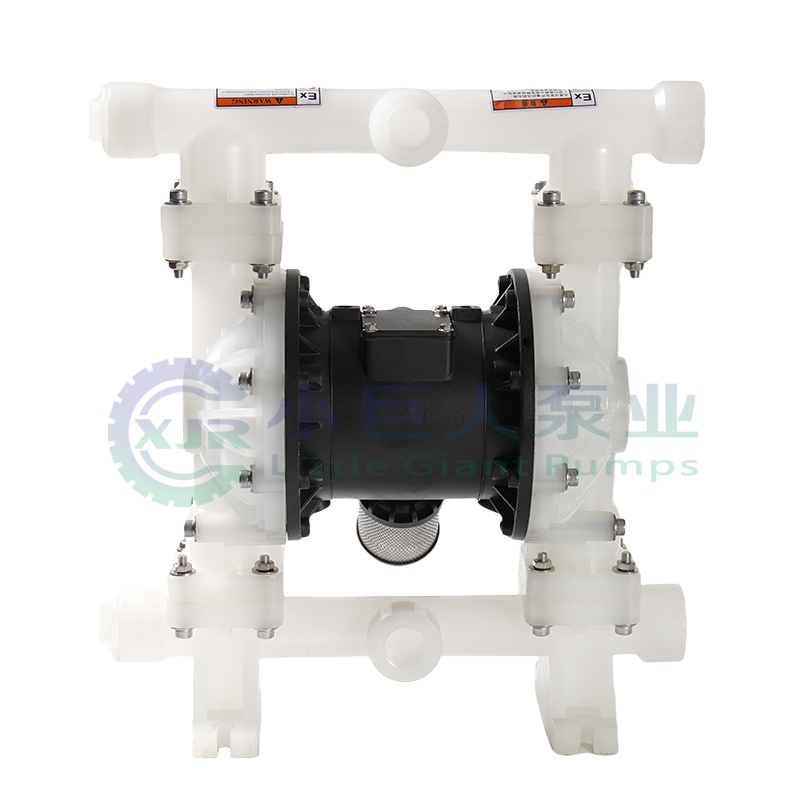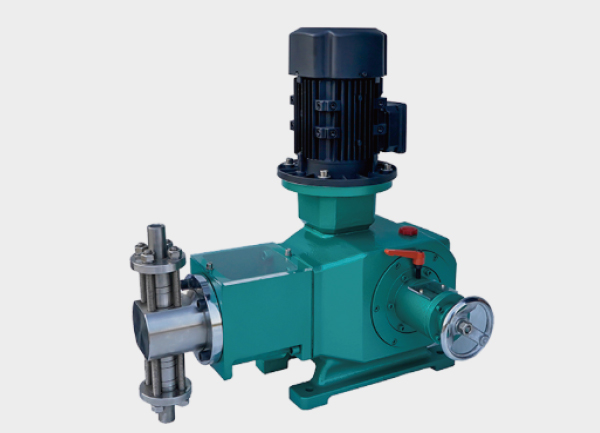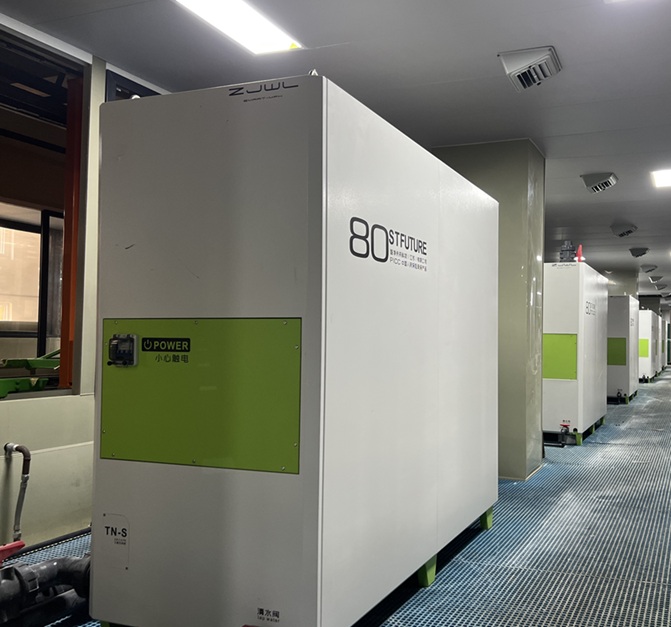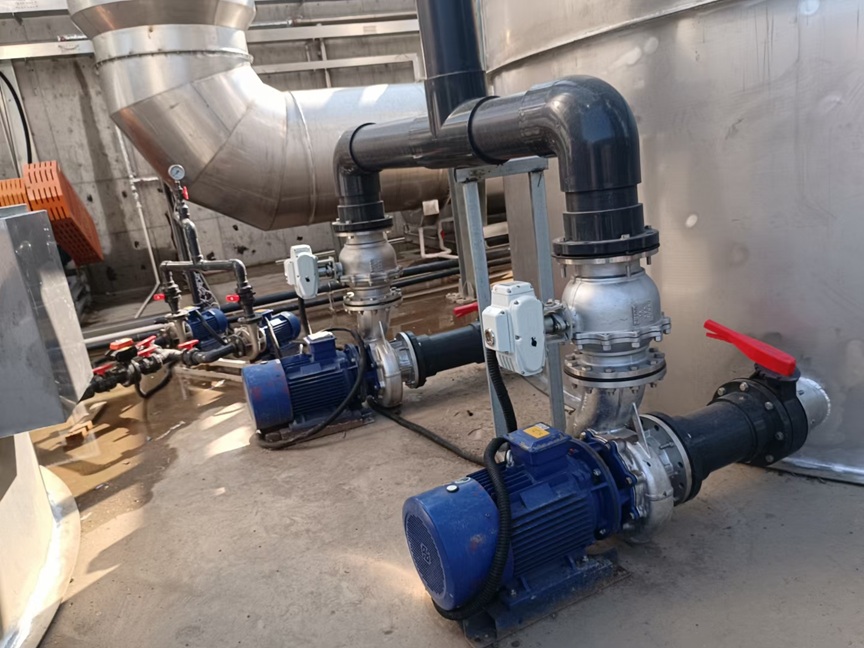Although magnetic drive centrifugal pumps and magnetic drive gear pumps both belong to the family of sealless magnetic drive pumps — using magnetic coupling instead of mechanical seals to eliminate leakage — their working principles, internal structures, performance characteristics, and applications differ significantly.
Here’s a detailed comparison to help you choose the right pump for your application.
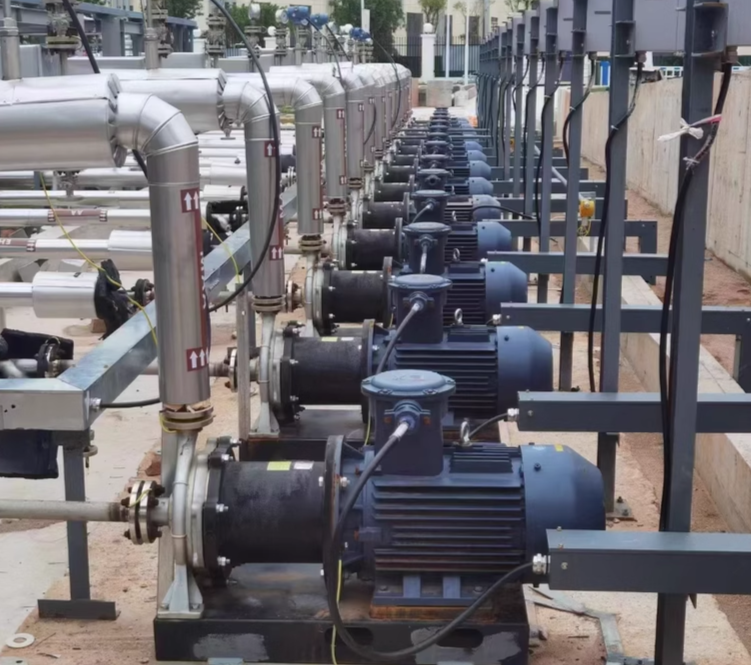
1. Core Difference: Working Principle and Liquid Transfer Mechanism
The fundamental difference lies in how mechanical energy is converted into liquid energy, which determines each pump’s flow behavior, pressure capability, and suitable fluid type.
(1) Magnetic Drive Centrifugal Pump
Working Principle:
Operates based on centrifugal force. The motor drives the outer magnetic rotor, which magnetically couples with the inner rotor attached to the impeller. As the impeller spins, it generates centrifugal force, pushing the liquid from the impeller center (inlet) toward the periphery (outlet), while a low-pressure zone forms at the center to continuously draw in fluid.
Flow Characteristics:
Flow rate is proportional to speed and highly sensitive to system backpressure. As discharge pressure increases, flow decreases significantly — making it a variable-flow pump.
Pressure Characteristics:
Delivers low to moderate pressure (typically ≤1.6 MPa). Pressure depends on impeller diameter and rotational speed. Ideal for low-pressure, high-flow duties.
(2) Magnetic Drive Gear Pump
Working Principle:
Operates based on positive displacement. The motor drives the outer magnetic rotor, which couples magnetically with the inner rotor connected to a pair of meshing gears. As the gears rotate, liquid is trapped in the cavities between gear teeth and the pump casing, then carried from the suction side to the discharge side, where it’s squeezed out as the gears mesh again.
Flow Characteristics:
Flow rate is directly proportional to speed and gear displacement (volume per revolution) and is barely affected by backpressure — making it a constant-flow pump.
Pressure Characteristics:
Capable of generating very high pressures (often exceeding 10 MPa). Pressure depends on gear precision and torque strength, suitable for high-pressure, low-flow operations.
2. Structural Differences
The design of each pump reflects its working principle — determining durability, efficiency, and maintenance requirements.
(1) Magnetic Drive Centrifugal Pump
Main Component: Centrifugal impeller (closed or semi-open type).
Pump Casing: Volute shape, designed to convert velocity energy into pressure energy.
Suction Type: Axial suction (fluid enters along the shaft axis). Limited suction lift, typically ≤3 m.
Tolerance to Impurities: Larger internal clearance allows minor liquid recirculation and moderate resistance to small, non-abrasive particles.
(2) Magnetic Drive Gear Pump
Main Component: A pair of meshing gears (involute or arc-type), made from metal or engineering plastics.
Pump Casing: Tight, closed cavity forming variable-volume chambers — no volute shape.
Suction Type: Radial suction (fluid enters from the side). Strong self-priming capability; lift up to 5–8 m for certain models.
Tolerance to Impurities: Extremely small clearances (≤0.05 mm) require perfectly clean liquids — impurities can seize or wear the gears.
3. Performance and Application Comparison
Performance differences directly influence where each pump type excels. Selection depends on fluid viscosity, required pressure, and process conditions.
(1) Magnetic Drive Centrifugal Pump
Suitable Fluids: Low-viscosity, clean liquids such as water, ethanol, or diluted acids/alkalis. Can tolerate minimal non-abrasive impurities but not viscous (>100 cSt) or particle-laden fluids.
Flow & Pressure Range: Large flow (1–1000 m³/h), low pressure (≤1.6 MPa). Perfect for circulation, cooling, and general transfer.
Flow Pulsation & Noise: Smooth, non-pulsating flow with low noise (≤75 dB).
Efficiency: High efficiency (70–90%) near rated conditions, but drops sharply at partial load; small flows may cause cavitation.
Maintenance: Simple structure, few wear parts (mainly impeller and bearings), long service life, low cost.
(2) Magnetic Drive Gear Pump
Suitable Fluids: High-viscosity, clean liquids such as lubricants, hydraulic oil, asphalt, resin, or other thick media (up to 10,000 cSt). Requires impurity-free fluids to avoid gear damage.
Flow & Pressure Range: Low flow (0.1–50 m³/h), high pressure (up to 10 MPa). Ideal for hydraulic systems, dosing, or viscous liquid transfer.
Flow Pulsation & Noise: Slight pulsation due to gear engagement; may require pulsation dampeners. Noise level 80–95 dB.
Efficiency: Strongly viscosity-dependent — low for thin liquids (50–60%), high for thick liquids (70–85%). Efficiency remains stable under constant flow.
Maintenance: More wear-sensitive; gears and bearings require frequent inspection. Cleanliness and proper lubrication are crucial, leading to higher maintenance costs.
4. Summary: How to Choose the Right Magnetic Drive Pump
| Selection Criterion | Magnetic Drive Centrifugal Pump | Magnetic Drive Gear Pump |
|---|---|---|
| Fluid Viscosity | ≤ 100 cSt (water, solvent, thin acids) | > 100 cSt (oil, resin, bitumen) |
| Flow & Pressure | High flow, low pressure | Low flow, high pressure |
| Cleanliness Requirement | Tolerates small non-abrasive impurities | Must be absolutely clean (no particles) |
| Best For | Cooling water, chemical circulation, transfer systems | Hydraulic oil, viscous liquid dosing, lubrication systems |
Conclusion
In summary, magnetic drive centrifugal pumps are ideal for clean, low-viscosity fluids requiring high flow and low pressure, offering smooth operation and minimal maintenance.
Meanwhile, magnetic drive gear pumps are better suited for viscous, particle-free liquids in low-flow, high-pressure applications where precise, steady flow is essential.
Choosing the right type based on fluid viscosity, system pressure, and cleanliness ensures long-term reliability and optimal performance.


